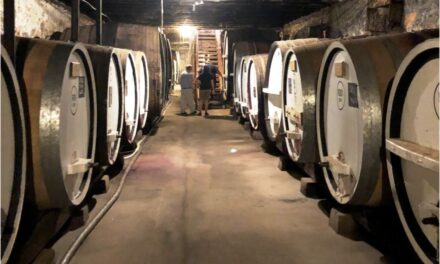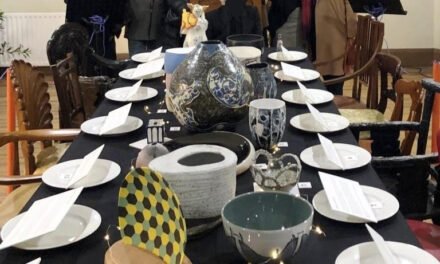Margaret Hodge
A family of Australasian Grebes delighted us by hatching chicks on our dam during the past week.
Each summer for the past five years a solo Australasian Grebe visited our garden dam for a month or so. The grebe is a fairly small fluffy bird that floats high on the water. Our solo visitor had light greyish brown wings with a buff white chest and neck, and a dark cap.
Grebes dive deep to feed amongst water plants, hunting aquatic creatures then bringing their prey to the surface to eat. They need water rich in aquatic vegetation to support the organisms they feed on.
A couple of months ago we noticed two grebes together on the dam. Their colour was so different that at first I thought it was another type of grebe. The wings are dark grey, the chest and neck light grey with bright brown streaks and the cap is black. There is a broad, bright chestnut brown stripe down the side of the head and neck, and a bright yellow patch of bare skin next to the beak. My bird book said this was the Australasian Grebe breeding plumage, suggesting the grebes had paired up and were nesting! Male and female grebes have the same plumage and sometimes young are raised by two female parents.
We watched the grebes build a floating nest amongst native rushes at one end of the dam. They chose a north-facing spot protected from the nearest shoreline by a dense hedge of water iris that provided shelter from southerly winds and land-based predators. The floating nest was a well-camouflaged mound of brown foliage anchored amongst rush plants.
Protecting their nest was serious business for the grebes. I watched a grebe dive deep, disappear for 30 seconds or so, then pop up and charge a much larger Pacific Black Duck that was floating too close to the grebe nest. The fierce grebe chattered loudly as it flapped its wings and appeared to run on the water aiming directly for the duck. The duck turned tail and promptly left the water. A regularly visiting heron, a cormorant, many wood ducks and the black ducks were all tolerated if they stayed well away from the nest.
After a while the grebes took turns sitting on the eggs in the nest or feeding and protecting their domain. Sometimes when the nest was in sunshine, both birds would leave the nest together, after covering the eggs with dark wet water plants. This is thought to conceal the eggs, stain them brown to help hide them and may help maintain their brooding temperature.
A day came when the dam was unusually quiet and empty of all other bird life. The ducks were resting around the far shores as if on guard. Later that day, I noticed pale fluff in the nest near the sitting grebe, and checked through my binoculars. Yes, the chicks had hatched!
Grebe chicks are the most gorgeous little babes. They are fluffy with white and grey stripes running from their head right down their wings and body, and a bright red eye mask. There are four of them in this family which is a typical clutch size.
The parent grebes were both very busy around the nest soon after hatching. One parent sheltered the four little ones beneath its wings while the other parent did quick dives nearby and fed the sitting parent and the chicks. This bustling continued for some time.

Australasian Grebe chicks resting on a parent’s back in their floating nest. (Photo: VIR Craven)
Then the sitting parent launched into the water with all four chicks riding on its back, tucked under its wings. The other parent continued to dive nearby and feed the family while it moved gently across the dam. Hungry chicks would pop their heads above the parental wing feathers, open beaked, to receive a morsel. The laden parent tended to direct its rear end towards the sun so sunshine could reach the nestling chicks and warm them. It also fed from the water surface and kept an eye on the young.
A day later the chicks were taking small solo swims near the parents during on-water feeding. Mostly one or two would have a quick swim then hop back on board, but occasionally all four were swimming independently. Over the next day the chick solo swims were longer and extended further from their parents. The adult grebes remained protective of their brood, fending off other birds if they got too close.
Another day passed and I saw how the chicks learn to dive. The family were on-water feeding in a dam otherwise empty of birdlife. The diving parent emerged from the deep with a beak of food. It turned its head and fed a chick that had ridden the dive while on the parents back. The chicks swapped back and forth between riding, feeding, swimming and being taken for dives. They move quickly and it was hard to keep track of them all.
Then I saw two chicks pop up from under the water, fluffy down slicked back along their bodies, and swim towards their parents who greeted them with attention and voice calls. The whole family chattered and gathered together calling and communicating in a grebe ‘high-five’ happy dance. I reckon it was their first dive. Magic.
Margaret Hodge is a Daylesford resident and keen observer of nature.
Photography by Vanessa IR Craven, a Daylesford resident and multi-talented creative with one focus in photographing birds.





